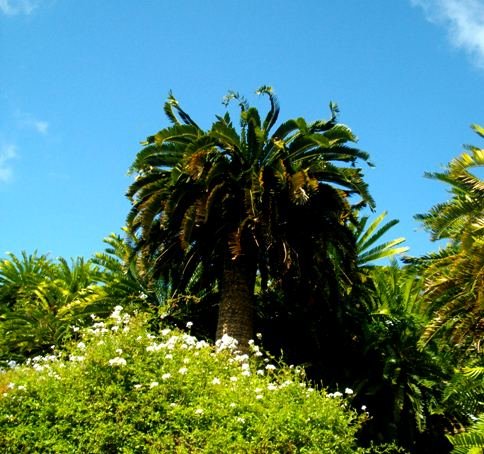Encephalartos woodii, tree without a wife

Visitors to Kirstenbosch stand in awe by this tree that is extinct in nature as far as is known. A salute is in order for the Kirstenbosch National Botanical Garden itself where the tree has grown so well for a century by 2016. A further salute is deserved by the assiduous efforts of many knowledgeable people who cared for it over the years, many of whom may now be forgotten.
After the Kirstenbosch centenary celebrations of 2013, the next such milestone to be noted should be for this Encephalartos woodii tree. In 1916 the Durban Botanical Garden sent a sucker of this mysterious cycad to Kirstenbosch. Since then it has become the magnificent specimen seen here behind its Plumbago auriculata apron.
But the story doesnt end there: There is no known female version of this cycad left in the world. Since the discovery of a clump of four male plants in 1895 on the fringes of the Ngoye forest (for which the Ngoye dwarf cycad, E. ngoyanus, has been named), no female specimen of E. woodii has ever been found. Nobody knows what a female cone of E. woodii might look like.
The discoverer of the species, the versatile Medley Wood, also Curator of the Durban Botanic Gardens, is remembered in the specific name. Some experts are wondering whether there even is a species such as E. woodii at all.
The conjectures include: The closest relation of E. woodii is thought to be E. natalensis, so E. woodii is merely a robust form of E. natalensis or a mutation of it; it is a natural hybrid of E. natalensis and E. ferox; it is a relic of an extinct species (www.plantzafrica.com; Coates Palgrave, 2002).

